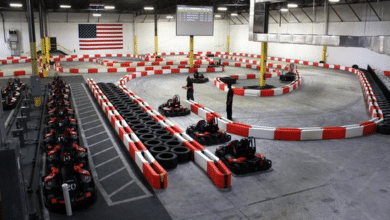Buy low, sell high: the Red Bull Salzburg model

By Alejandro Giménez
Salzburgo, Austria, Oct 22 (EFE).- Buy promising youngsters cheap, develop their talent, and sell them as big stars with a hefty price tag. That is the model of FC Red Bull Salzburg, and Erling Haaland, one of world football’s hottest properties, is the best example of the Austrian champions’ player recruitment policy.
“We have the youngest team in our history. The most important thing is that we plan three or four years ahead to see who might be the next players and to be a step ahead,” the club’s sporting director Christoph Freund tells Efe.
Since energy drinks giant Red Bull became the club’s main sponsor in 2005, Salzburg has become the dominant force in Austrian football, winning 12 league titles and eight cups.
But despite being regulars in the Uefa Europa League, and appearing in the Champions League, the club’s only international success has come at youth level.
DEVELOPING STARS
With an average age of 23 and up to 22 foreigners in their ranks, Salzburg’s strategy is clear: find the most promising youngsters on the international market, and boost their value before launching them to stardom.
The club does not disclose the transfer fees or the profit it makes from these sales, revealing only that it has earned around 200 million euros in transfers over the last five to seven years.
Liverpool’s Senegalese star Sadio Mane is one of the best examples. Salzburg paid four million euros for his services in 2012 — just a year later, they sold him to Southampton for nearly five times that amount, and the next season he moved on to Anfield, where he has gone on to win the Premier League and Champions League.
The formula has also worked with Naby Keita, who was signed for 1.5 million euros in 2014 and sold for nearly 30 million two years later, and with Erling Haaland, who was bought for 8 million euros and is now valued at 150 million as one of the most sought after strikers in the world.
PUTTING FAITH IN
At first, Freund explains, the club’s philosophy was different, as the playing squad still had some ageing players at the tailend of their careers. But in 2012, the model shifted towards scouting the most talented international up and coming players.
The project to develop youth was based on two pillars: an international network of eagle-eyed scouts and an elite, cutting edge training center.
“We only look at players who are between 16 and 19 years old. We get a lot of messages from agents but most don’t interest us because they are older or don’t fit our style,” says Freund, who says the strict criteria exclude 98% of potential players.
Those who make the cut have the opportunity to train at the RB Akademie, a high-performance complex dedicated to the club’s youth ranks, which has already produced seven first-team players for Salzburg.
A NETWORK OF ALLIES
Beyond Austria’s borders, Salzburg can fall back on its deals with partners in Africa, Asia and South America, where Red Bull has its own training centre, in Brazil.
“You can’t go to Africa or Asia and say that you’re there to explain how we play football and bring the best talents. There is a lot of work behind it all,” the sporting director says.
There is no space in Salzburg’s first team for all these players, so the club has a deal with FC Liefering, in Austria’s second division, where players can get some valuable playing time.
FOOTBALL’S FUTURE





